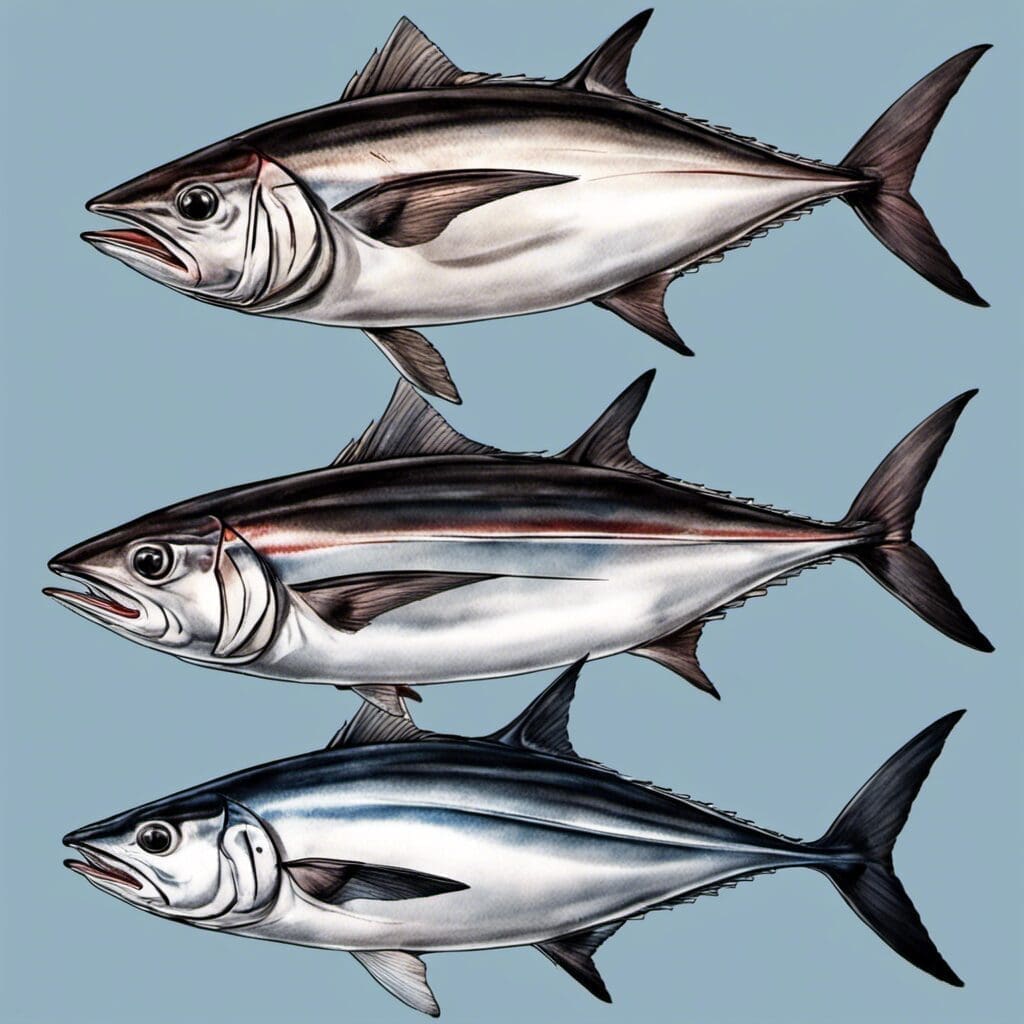Introduction
Species Name: Skipjack Tuna
Family Name: Scombridae
Skipjack Tuna, scientifically known as Katsuwonus pelamis, belongs to the mackerel family Scombridae. They are fastest swimmers and widely known for their torpedo-shaped, streamlined bodies and their metallic color.
Conservation Status
Current status: Least Concern
Conservation efforts: The World Wildlife Fund (WWF) has incorporated measures to regulate tuna fishing and to prevent overfishing.
Species Statistics
| Average Length | 60 – 80 cm |
|---|---|
| Length Range | 40 – 110 cm |
| Average Weight | 8.5 – 34 kg |
| Weight Range | 3.5 – 45 kg |
| Average Lifespan | 8 – 12 years |
These robust swimmers, despite their small size, can achieve speeds of up to 75 km per hour.
Distribution
Regions/Countries: Skipjack Tuna are found throughout the world in the waters of the Atlantic, Indian, and Pacific Oceans as well as the Mediterranean Sea.
Migration patterns: They follow the warm ocean currents and migrate towards colder waters in the summer.
Habitats
Water type: Saltwater
Depth range: They typically inhabit the upper 50 - 100 meters of the ocean, but can dive up to 260 meters.
Temperature range: They prefer warmer waters between 15°C and 30°C.
When and Where to See
They are mostly seen during late spring and summer seasons as they migrate to colder waters. You’re likely to spot them from late dawn to sunset.
Best Fishing Locations
- Florida Keys, USA
- Andaman Sea, Thailand
- Mentawai Islands, Indonesia
- Coral Sea, Australia
- Coast of Mauritius
- KwaZulu-Natal, South Africa
- Bay of Biscay, Spain/France
- Maldives
- Pacific coast of Mexico
- Fiji Islands
Skipjack Tuna is also often spotted around seamounts, atolls, and other underwater structures due to the ample food supply these areas provide.
How to Catch
Preferred bait or lures: live or dead baitfish such as sardines, anchovies, squid, or mackerel. Artificial lures like feathered jigs, spoons, and poppers are also effective.
Fishing techniques: Trolling with surface lures is the most common method, but they can also be caught using line and pole methods.
Identification Guide
Skipjack Tuna’s body is dark blue to purple on the back, and silvery-white below with 4-6 dark bands running from behind the head to below the pectoral fin. They have a streamlined body slender at both ends and a narrow tail base. They have two dorsal fins, the second typically followed by 7-8 finlets.
Culinary Profile
How to Cook
Skipjack Tuna can be grilled, broiled, or cooked in a variety of sauces. Their firm texture makes them ideal for sushi and sashimi.
Taste Profile
The meat of Skipjack Tuna has a strong, pronounced flavor and a firm, relatively high-fat content compared to other tunas.
Nutritional Information
Skipjack Tuna is high in protein and vitamins B12 and D. It also has a good amount of Omega-3 fatty acids benefiting cardiovascular health.
Recipes
Grilled Skipjack with a soy-honey glaze or sashimi-style Skipjack with ponzu sauce are popular dishes.
Additional Information
Skipjack Tuna are schooling fish, often associating with birds, floating objects and other fish to find food. Their diet mostly consists of small fish, squids, and crustaceans. Natural predators would be sharks, larger tuna, sea birds and toothed whales, while human-induced threats come from overfishing.
References and Further Reading
Handbook of the Sea – Tuna and Tuna-like Species by S. Blaber, Tuna: Physiology, Ecology and Evolution by B. Block, and The World of Tuna by I. Hanazaki are all excellent references to learn more about these fascinating creatures

